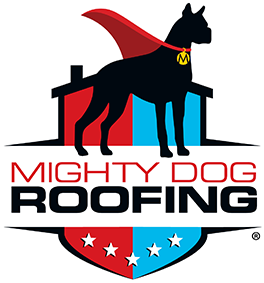Best Roofing Material (2024)
Choosing the suitable roofing material depends on the homeowner's needs and preferences. You should select a material that complements your home's appearance, is energy efficient, and can resist the elements. Asphalt shingles make up the majority of roofs for new construction homes or roof replacements in the United States. Metal, clay, wood, slate, or synthetic roofs might be good alternatives, depending on your preference. The table below compares the best roofing material in 2024.
| Roofing Material | Advantages | Disadvantages | Average Cost (2,000-square-foot roof) |
|---|---|---|---|
| Asphalt Shingles | - Affordable - Easy to install - Variety of colors and styles | - Shorter lifespan compared to other materials - Susceptible to wind damage | $8,927 |
| Metal Roofing | - Long lifespan (50+ years) - Energy-efficient - Fire-resistant | - Higher initial cost - Can be noisy during rain or hail | $17,522 |
| Clay Tiles | - Extremely durable - Fire-resistant - Energy-efficient | - Heavy, may require additional structural support - Expensive | $29,417 |
| Slate Roofing | - Long-lasting (75-100 years) - Highly durable - Attractive appearance | - Very heavy - High cost - Requires specialized installation | $29,564 |
| Wood Shakes | - Natural appearance - Good insulation properties | - Requires regular maintenance - Prone to fire unless treated | $21,769 |
| Stone Coated Steel Roof | - Extremely durable - Long lifespan, often lasting 40-70 years - Available in a variety of styles and colors | - High initial cost - Complex Installation - Noisier during rain or hail unless insulation is added | N/A |
| Synthetic Roofing (Rubber, Plastic, Polymer) | - Lightweight - Durable - Low maintenance | - Can be more expensive than asphalt - Limited recycling options | N/A |
Average cost based on data analysis from RSMeans
How to Choose the Best Roofing Material
Selecting the best roofing material for your roof involves considering several factors, including climate, budget, building structure, aesthetic preferences, and long-term maintenance. Here's a step-by-step guide to help you make an informed decision:
1: Assess Your Climate
- Weather Resistance: Choose materials that can withstand your local weather conditions. For example, consider materials like metal if you live in an area prone to high winds or hurricanes.
- Temperature Fluctuations: In regions with extreme temperatures, materials with good insulation properties, such as clay or concrete tiles, can help regulate indoor temperatures.
2: Determine Your Budget
- Initial Cost: Consider the upfront cost of the roofing material and installation. Asphalt shingles are generally the most affordable, while slate and metal roofing are more expensive.
- Long-Term Costs: Factor in the lifespan and maintenance costs. While some materials may have a higher initial cost, they could be more cost-effective in the long run due to their durability and low maintenance.
3: Consider the Roof Structure
- Weight: Ensure your roof structure can support the weight of the material. Heavier materials like slate and clay tiles may require additional structural support.
- Slope and Complexity: The pitch and complexity of your roof can influence the suitability of certain materials.
4: Evaluate Aesthetic Preferences
- Style and Appearance: Choose a material that complements your home's architectural style. Stone-coated steel and synthetic roofing offer versatility in appearance, mimicking traditional materials.
- Color Options: Some materials come in a wide range of colors, allowing you to match or enhance your home's exterior look.
5: Check Local Building Codes and Regulations
- Compliance: Ensure the chosen material complies with local building codes and regulations. Some areas may restrict certain materials due to fire risk, weight, or environmental concerns.
6: Consider Environmental Impact
- Sustainability: Look for materials that are eco-friendly, recyclable, or made from recycled content. Green roofing options and solar tiles are excellent for reducing environmental impact.
- Energy Efficiency: Materials that reflect heat and provide good insulation can help reduce energy consumption and lower utility bills.
7: Research Warranties and Lifespan
- Warranty Coverage: Check the manufacturer's warranty. A longer warranty often indicates confidence in the product's durability.
- Expected Lifespan: Consider the material's expected lifespan. Long-lasting options like metal, slate, and clay tiles might be more cost-effective.
8: Maintenance Requirements
- Maintenance Needs: Evaluate how much maintenance the material requires. Low-maintenance options can save time and money in the long run.
- Repair Ease: Consider repairing or replacing roof sections if damage occurs.
9: Consult with Professionals
- Expert Advice: Consult with roofing professionals for personalized recommendations based on your situation. They can provide insights on the best materials for your roof type, local climate, and budget.
10: Review References and Case Studies
- Customer Reviews: Look for reviews and testimonials from homeowners who have used the materials you are considering.
- Case Studies: Review case studies or examples of homes similar to yours that have successfully used the roofing material.
By carefully considering these factors, you can choose the best roofing material that fits your needs and provides long-lasting protection and aesthetic appeal for your home.
Mighty Dog Roofing offers expert installation and maintenance for residential and commercial roofs, gutters, windows, siding, and solar panels. We pride ourselves on our hassle-free installations, best-in-class products, and excellent customer service. Call 844-942-4081 to schedule a free roof inspection.


